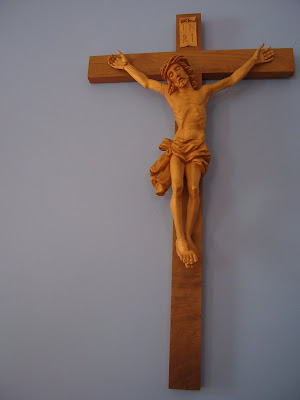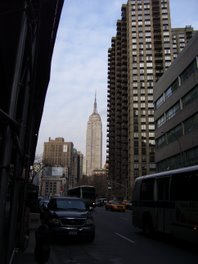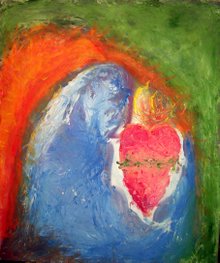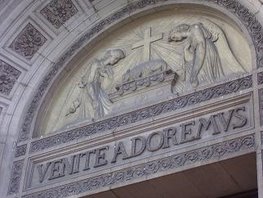Grad apps done
So My grad apps are finally done... and while writing one of the statements of purpose, I learned quite a bit about my own art. So I thought I'd share it.
============================
I’ve sat with men and women on the dark precipice of death, and seen joy beyond my wildest imagination. Smiles that haunt my saddest memories and that remind me that there is something more to humanity. Something transcendent about our very nature that calls out, indeed begs for understanding. I believe it is only art that can begin this understanding. And that is why I am an artist.
My introduction to art was as a child living in Athens, surrounded by the foundations of our culture. Yet, the idea of art as a career came through my studies in architecture. So perhaps it’s no surprise that some of my influences spawn from formalist, modernist and minimalist backgrounds. I consider amongst my predecessors the architects: Le Corbusier, Tadao Ando, and Steven Hull, as well as the artists: Anish Kapoor, Ann Hamilton, and Richard Serra.
Aside from my upcoming degree in Art, I have received a Liberal Studies degree with a minor in Philosophy. This summer I plan to finish my Associates in Architecture. In addition, I have strong background in physics, math and astronomy. From this rigorous scientific background I have come to believe that art is as valid an area of research as any science. And it is only art that can dynamically and creatively get at the core of who we are as individuals. Art, for me, is an intuitive phenomenological research field. To this end, “Love and Responsibility”, a phenomenologic philosophical work, by Karol Wojtyla has been instrumental in my practice and understanding of art.
My art is also informed by my Catholic faith. My faith has driven me to work with the poor and dying across the world, from New York to Calcutta. In India, I saw people who were covered in years of dirt, puss and decay, overflow with joy when someone offered them a bed, a bath and food. When for the first time someone else understood the basis of their dignity, that they too were human. They craved this understanding, yet their transcendent nature was hidden in a beautiful physicality that blinded.
It is this need for understanding that has led me to my current work. Steganography is the artistic application of code making; the hiding of codes in something beautiful. For me codes parallel personality, in that the essential purpose of codes is to be understood, yet they are hidden until someone invests time and love.
When I work, I let an idea lead me through the mediums it wants to be realized in. Each medium imposes a new essence to my work that challenges me to understand and re-understand my art. This in turn, evolves my interests and affects the path of my work.
An example of this evolution is the color code and color field series evidenced in my slides. They initially began as a series of paintings a la Hans Hofmann. Their rectilinear subjects suggested a three dimensional cube, so I painted six color field paintings on a cube with interchangeable sides. From that I decided to explode the cube and include personality. I then created the installation: “Michelle” which is a phenomenologic portrait of my wife comprised of thirty six boxes of color. While reflecting upon that installation, I realized that I was installing sensory information, which varied by viewer, yet still conveyed an unchanging personality. To push and strengthen the personality, I wanted to include a hidden yet essential aspect. With that spark, I decided to return to my earlier scientific, philosophic and mathematic training and use steganography to hide the building blocks of unique personalities in color.
After research and discussions with a Cryptographer and a Computer Scientist, I figured out a dynamic way to encode any given text into color. I created two initial paintings, including “Rosetta”, which evolved into the Babel installations. Babel is comprised of stacked colored boxes, with the orientation and presence varying by site but the same underlying text: “Did you understand?” From this, I wanted to create a piece that was dynamic and birthed by viewers. For the Secrets series I wrote a computer program, which permits viewers to enter text which is encoded into color and displayed on multiple monitors and projectors. Each step builds off the last and permits a deeper investigation and evolution.
I believe Hunter would greatly assist my development and permit me to continue this process of exploration. Hunter offers unparalleled artistic colleagues, rigorous artistic expectations, and access to a primary center of the art world.



